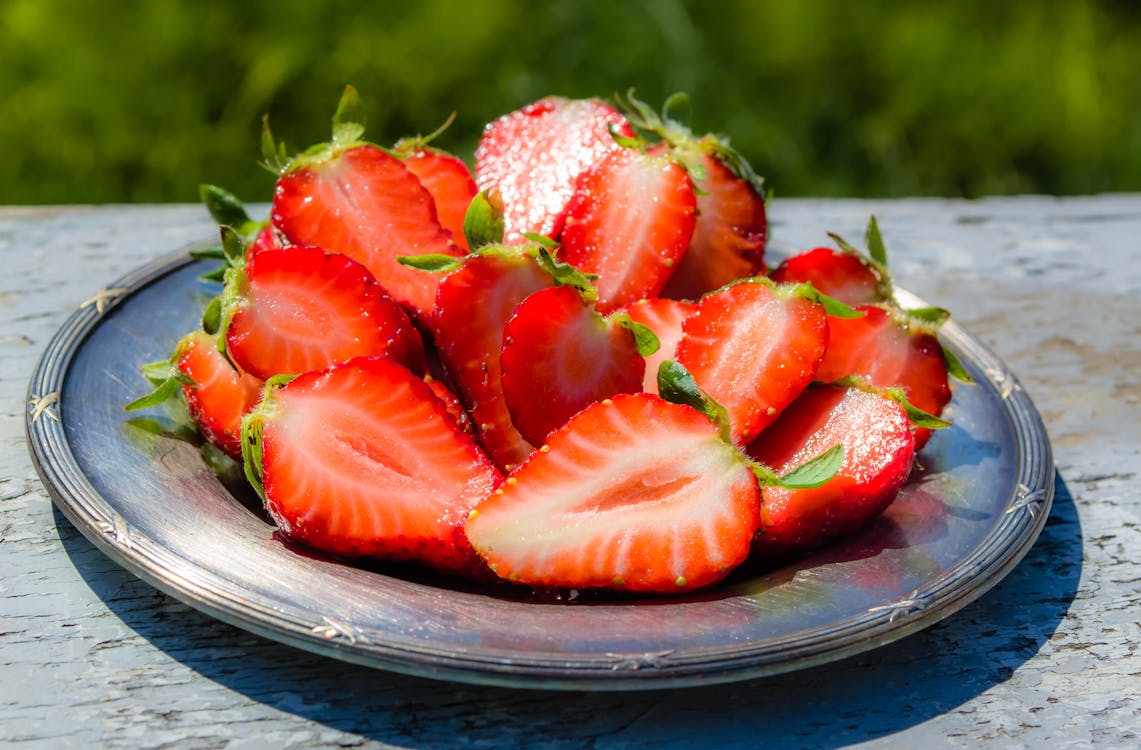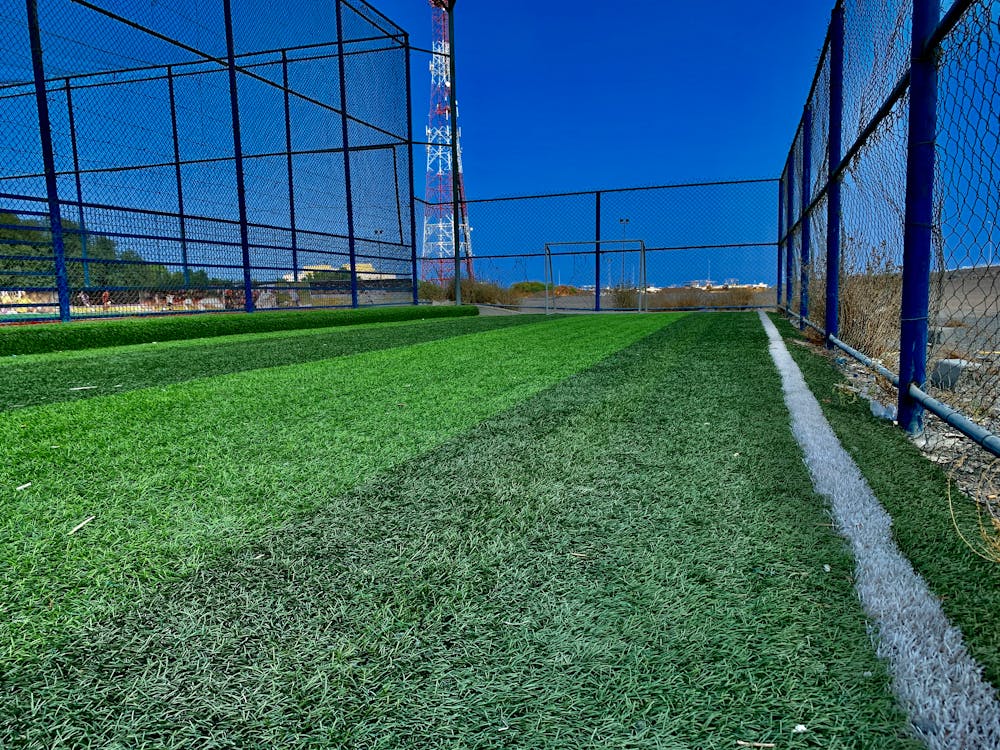What Foods Have Listeria? This is a crucial question, and FOODS.EDU.VN is here to provide you with a thorough understanding of Listeria contamination in food, prevention strategies, and healthy eating habits. Explore this guide to discover which food pose a higher risk, understand the risk factors, and ensure you and your loved ones stay safe from Listeriosis.
1. Understanding Listeria and Its Impact
Listeria monocytogenes is a bacterium that can cause a severe infection called Listeriosis. This infection primarily affects pregnant women, newborns, older adults, and people with weakened immune systems. Understanding how Listeria spreads and its potential health impacts is crucial for preventing illness.
1.1 What is Listeria?
Listeria monocytogenes is a resilient bacterium found in soil, water, and animal feces. It can survive and even grow in refrigerated temperatures, making it a unique and persistent threat in the food industry. According to the Centers for Disease Control and Prevention (CDC), an estimated 1,600 people get Listeriosis each year, and about 260 die.
1.2 How Listeria Spreads
Listeria contamination typically occurs when food comes into contact with contaminated soil, water, or equipment during production and processing. Animals can also carry the bacteria without showing symptoms, leading to contamination of meat and dairy products.
1.3 Health Impacts of Listeriosis
Listeriosis can cause a range of symptoms, from mild flu-like symptoms to severe complications.
- Pregnant Women: Listeriosis can lead to miscarriage, stillbirth, premature delivery, and severe infection of the newborn.
- Newborns: Infants can develop severe infections, including sepsis and meningitis.
- Older Adults and Immunocompromised Individuals: These groups are at higher risk of developing severe illness, including sepsis, meningitis, and even death.
Table 1: Symptoms of Listeriosis
| Symptom | Description |
|---|---|
| Fever | Often accompanied by chills and muscle aches. |
| Muscle Aches | Can be severe and debilitating. |
| Nausea | Feeling sick to the stomach. |
| Vomiting | Expulsion of stomach contents. |
| Diarrhea | Frequent, loose stools. |
| Headache | Persistent pain in the head. |
| Stiff Neck | Difficulty and pain when moving the neck. |
| Confusion | Difficulty thinking clearly. |
| Loss of Balance | Feeling unsteady or dizzy. |
| Convulsions | Uncontrolled muscle spasms and loss of consciousness. |









To delve deeper into the types of bacteria that can affect your food safety, FOODS.EDU.VN offers additional resources to enhance your knowledge and ensure your food is safe.
2. High-Risk Foods for Listeria Contamination
Certain foods are more prone to Listeria contamination due to their production and processing methods. Being aware of these high-risk foods can help you make informed choices and take necessary precautions.
2.1 Soft Cheeses
Soft cheeses, such as Brie, Camembert, feta, and queso fresco, are often made with unpasteurized milk, which can harbor Listeria. Pasteurization kills harmful bacteria, so cheeses made with pasteurized milk are generally safer.
2.2 Deli Meats and Hot Dogs
Deli meats and hot dogs can become contaminated with Listeria during slicing, processing, and packaging. The bacteria can grow even under refrigeration, posing a risk if these products are not adequately heated before consumption. According to the FDA, thoroughly heating deli meats and hot dogs until steaming hot can kill Listeria.
2.3 Smoked Seafood
Smoked seafood, including refrigerated smoked salmon, trout, herring, and cod, can be contaminated with Listeria. The smoking process may not always kill all bacteria, and refrigeration temperatures can still allow Listeria to grow.
2.4 Raw Sprouts
Raw sprouts, such as alfalfa, clover, and radish sprouts, are grown in warm, humid conditions that are ideal for bacterial growth. Even with thorough washing, it is difficult to remove all bacteria from sprouts. The FDA advises that high-risk individuals should avoid eating raw sprouts.
2.5 Unpasteurized Milk and Dairy Products
Unpasteurized milk and dairy products can contain Listeria and other harmful bacteria. Pasteurization is a process that heats milk to kill pathogens, making pasteurized products safer. The CDC recommends that pregnant women, older adults, and people with weakened immune systems should avoid consuming unpasteurized milk and dairy products.
2.6 Pre-cut Fruits and Vegetables
Pre-cut fruits and vegetables, such as melon, berries, and leafy greens, can become contaminated during processing and packaging. The cutting process can introduce bacteria, and the moist environment can promote bacterial growth. Always wash pre-cut produce thoroughly before eating.
2.7 Ready-to-Eat Salads
Ready-to-eat salads, especially those containing meat, poultry, or seafood, can be a source of Listeria contamination. These salads often have multiple ingredients that can introduce bacteria, and the products may sit for extended periods, allowing Listeria to grow.
Table 2: High-Risk Foods for Listeria
| Food Category | Examples | Risk Factors |
|---|---|---|
| Soft Cheeses | Brie, Camembert, Feta, Queso Fresco | Made with unpasteurized milk; bacteria can grow during production. |
| Deli Meats and Hot Dogs | Sliced turkey, ham, salami, frankfurters | Contamination during slicing and packaging; bacteria can grow under refrigeration. |
| Smoked Seafood | Refrigerated smoked salmon, trout, herring, cod | Smoking process may not kill all bacteria; refrigeration temperatures can still allow Listeria to grow. |
| Raw Sprouts | Alfalfa, clover, radish sprouts | Grown in warm, humid conditions ideal for bacterial growth; difficult to remove bacteria through washing. |
| Unpasteurized Milk/Dairy | Raw milk, unpasteurized cheese | Lack of pasteurization allows bacteria to survive and multiply. |
| Pre-cut Fruits and Vegetables | Melon, berries, leafy greens | Cutting process introduces bacteria; moist environment promotes bacterial growth. |
| Ready-to-Eat Salads | Prepared salads with meat, poultry, or seafood | Multiple ingredients increase contamination risk; products may sit for extended periods, allowing Listeria to grow. |
| Supplement Shakes | Pre-mixed protein or meal replacement shakes | Potential contamination during manufacturing; ideal environment for bacterial growth if not stored properly. |
3. Prevention Strategies to Minimize Listeria Risk
Preventing Listeria contamination requires a multi-faceted approach, from safe food handling practices to proper storage and cooking techniques.
3.1 Safe Food Handling Practices
- Wash Your Hands: Wash your hands thoroughly with soap and water for at least 20 seconds before and after handling food.
- Clean Surfaces: Clean and sanitize kitchen surfaces, cutting boards, and utensils with hot, soapy water and a bleach solution (1 teaspoon of bleach per gallon of water).
- Separate Raw and Cooked Foods: Keep raw meat, poultry, and seafood separate from cooked and ready-to-eat foods to prevent cross-contamination.
- Use Separate Cutting Boards: Use one cutting board for raw meats and another for fruits, vegetables, and cooked foods.
- Wash Produce Thoroughly: Wash all fruits and vegetables under running water, even if you plan to peel them. Use a scrub brush for firm produce like melons and potatoes.
3.2 Proper Food Storage
- Refrigerate Promptly: Refrigerate perishable foods within two hours. If the temperature is above 90°F (32°C), refrigerate within one hour.
- Keep Refrigerator Clean: Regularly clean your refrigerator to prevent the growth of Listeria and other bacteria.
- Use Proper Temperatures: Ensure your refrigerator is set to 40°F (4°C) or below and your freezer is set to 0°F (-18°C).
- Store Foods Properly: Store raw meats, poultry, and seafood on the bottom shelf of the refrigerator to prevent their juices from dripping onto other foods.
3.3 Cooking Techniques to Kill Listeria
- Cook Foods to Safe Temperatures: Use a food thermometer to ensure that foods are cooked to safe internal temperatures. The USDA recommends the following:
- Poultry: 165°F (74°C)
- Ground Meat: 160°F (71°C)
- Beef, Pork, Lamb, and Veal: 145°F (63°C) with a 3-minute rest time
- Seafood: 145°F (63°C)
- Reheat Leftovers Thoroughly: Reheat leftovers to an internal temperature of 165°F (74°C) to kill any bacteria that may have grown during storage.
- Avoid Raw or Undercooked Foods: High-risk individuals should avoid eating raw or undercooked meats, poultry, seafood, and eggs.
3.4 Specific Recommendations for High-Risk Groups
- Pregnant Women:
- Avoid soft cheeses made with unpasteurized milk.
- Heat deli meats and hot dogs until steaming hot before eating.
- Avoid refrigerated smoked seafood.
- Wash raw fruits and vegetables thoroughly.
- Older Adults and Immunocompromised Individuals:
- Follow the same guidelines as pregnant women.
- Avoid raw sprouts.
- Be extra cautious when eating at restaurants and social gatherings.
Table 3: Prevention Strategies for Listeria
| Strategy | Description | Importance |
|---|---|---|
| Safe Food Handling | Wash hands, clean surfaces, separate raw and cooked foods, wash produce thoroughly. | Prevents cross-contamination and reduces bacterial load on food. |
| Proper Food Storage | Refrigerate promptly, keep refrigerator clean, use proper temperatures, store foods properly. | Inhibits bacterial growth and prevents contamination of other foods. |
| Cooking Techniques | Cook foods to safe temperatures, reheat leftovers thoroughly, avoid raw or undercooked foods. | Kills Listeria and other harmful bacteria in food. |
| Recommendations for High-Risk Groups | Specific guidelines for pregnant women, older adults, and immunocompromised individuals, such as avoiding certain foods. | Minimizes risk of Listeriosis in vulnerable populations. |
4. Recent Listeria Outbreaks and Recalls
Staying informed about recent Listeria outbreaks and food recalls is crucial for protecting yourself and your family. These events can highlight specific foods or brands that pose a risk, allowing you to take appropriate action.
4.1 Tracking Outbreaks
Several government agencies, including the CDC and FDA, track Listeria outbreaks and issue public health alerts. Monitoring these alerts can help you stay informed about potential risks.
4.2 Common Foods Involved in Recalls
- Dairy Products: Cheeses, ice cream, and yogurt have been linked to Listeria recalls due to contamination during production.
- Produce: Fruits and vegetables, particularly pre-cut items and sprouts, are often recalled due to Listeria contamination.
- Processed Meats: Deli meats, hot dogs, and other processed meats are susceptible to contamination during slicing, packaging, and processing.
- Seafood: Smoked seafood and other seafood products can be recalled due to Listeria contamination.
4.3 Case Studies of Recent Outbreaks
- 2024 Listeria Outbreak Linked to Queso Fresco and Cotija Cheese: In February 2024, a Listeria outbreak was linked to queso fresco and cotija cheese, resulting in multiple illnesses and hospitalizations. The outbreak led to a recall of several brands of cheese.
- 2023 Listeria Outbreak Linked to Peaches, Nectarines, and Plums: In November 2023, a Listeria outbreak was linked to bagged peaches, nectarines, and plums. The outbreak prompted a recall of the affected fruits and raised concerns about the safety of stone fruits.
- 2022 Listeria Outbreak Linked to Deli Meat and Cheese: In November 2022, a Listeria outbreak was linked to deli meat and cheese, resulting in several illnesses and one death. The outbreak highlighted the risk of Listeria contamination in deli products and the importance of proper handling and storage.
Table 4: Recent Listeria Outbreaks and Recalls
| Year | Food Product(s) | Impact | Source |
|---|---|---|---|
| 2024 | Queso Fresco and Cotija Cheese | Multiple illnesses and hospitalizations; recall of several cheese brands. | CDC and FDA reports |
| 2023 | Peaches, Nectarines, and Plums | Recall of affected fruits; concerns about the safety of stone fruits. | CDC and FDA reports |
| 2022 | Deli Meat and Cheese | Several illnesses and one death; highlighted the risk of Listeria in deli products. | CDC and FDA reports |
| 2022 | Ice Cream | Numerous illnesses and hospitalizations; large-scale recall of ice cream products. | CDC and FDA reports |
| 2022 | Brie and Camembert Cheese | Multi-state outbreak with hospitalizations; recall of affected cheese products. | CDC and FDA reports |
| 2022 | Enoki Mushrooms | International outbreak with multiple cases; recall of enoki mushrooms from various suppliers. | CDC and FDA reports, European Food Safety Authority (EFSA) |
| 2021 | Packaged Salads | Several cases reported; recall of specific salad brands due to Listeria contamination. | CDC and FDA reports |
| 2020 | Soft Cheeses (e.g., Ricotta Salata) | Outbreak linked to imported cheese; resulted in illnesses and product recall. | CDC and FDA reports |
| 2019 | Pre-cut Melon (Cantaloupe, Honeydew, Watermelon) | Multi-state outbreak with hospitalizations; led to recall of pre-cut melon products from specific suppliers. | CDC and FDA reports |
| 2018 | Deli Meats | Several illnesses and one death; resulted in recall of various deli meat products. | CDC and FDA reports |
5. The Role of Food Safety Regulations and Inspections
Government agencies play a critical role in ensuring food safety through regulations, inspections, and monitoring programs. These efforts help prevent Listeria contamination and protect public health.
5.1 Government Agencies Involved
- Food and Drug Administration (FDA): The FDA regulates the production, processing, and distribution of most foods, including dairy products, seafood, and produce.
- United States Department of Agriculture (USDA): The USDA regulates meat, poultry, and processed egg products.
- Centers for Disease Control and Prevention (CDC): The CDC tracks foodborne illnesses and investigates outbreaks.
5.2 Food Safety Regulations and Standards
- Food Safety Modernization Act (FSMA): FSMA is a landmark law that focuses on preventing foodborne illnesses. It requires food manufacturers to implement preventive controls to minimize the risk of contamination.
- Hazard Analysis and Critical Control Points (HACCP): HACCP is a systematic approach to identifying and controlling potential hazards in food production. Many food manufacturers use HACCP plans to ensure food safety.
5.3 Inspections and Monitoring Programs
- FDA Inspections: The FDA conducts regular inspections of food processing facilities to ensure compliance with safety regulations.
- USDA Inspections: The USDA inspects meat, poultry, and processed egg product facilities to verify that they meet safety standards.
- Sampling and Testing: Government agencies conduct sampling and testing of foods to detect Listeria and other pathogens.
5.4 How Regulations Protect Consumers
Food safety regulations help protect consumers by:
- Preventing Contamination: Regulations require food manufacturers to implement preventive controls to minimize the risk of contamination.
- Ensuring Proper Handling and Storage: Regulations set standards for proper handling and storage of food products.
- Monitoring and Testing: Government agencies monitor and test foods to detect Listeria and other pathogens.
- Enforcing Compliance: Government agencies enforce compliance with safety regulations through inspections, recalls, and other measures.
Table 5: Government Oversight of Food Safety
| Agency | Responsibility | Regulations and Standards | Inspections and Monitoring |
|---|---|---|---|
| FDA | Regulates production, processing, and distribution of most foods, including dairy products, seafood, and produce. | Food Safety Modernization Act (FSMA), Hazard Analysis and Critical Control Points (HACCP). | Regular inspections of food processing facilities; sampling and testing of foods. |
| USDA | Regulates meat, poultry, and processed egg products. | Federal Meat Inspection Act, Poultry Products Inspection Act. | Inspections of meat, poultry, and processed egg product facilities; verification of safety standards. |
| CDC | Tracks foodborne illnesses and investigates outbreaks. | Works with FDA and USDA to implement food safety policies and investigate outbreaks. | Monitors foodborne illness trends; collaborates with state and local health departments. |
6. Listeria in Specific Food Categories: A Closer Look
To provide a more detailed understanding of Listeria risks, let’s examine specific food categories and the steps you can take to minimize contamination.
6.1 Dairy Products
Dairy products, particularly soft cheeses made with unpasteurized milk, are a significant source of Listeria contamination.
- Soft Cheeses: Avoid soft cheeses like Brie, Camembert, feta, and queso fresco unless they are made with pasteurized milk.
- Unpasteurized Milk: Do not consume unpasteurized milk or dairy products.
- Pasteurized Products: Choose pasteurized dairy products whenever possible.
- Storage: Store dairy products at the correct temperature and consume them before their expiration dates.
6.2 Meats and Poultry
Meats and poultry can be contaminated with Listeria during processing, slicing, and packaging.
- Deli Meats and Hot Dogs: Heat deli meats and hot dogs until steaming hot before eating.
- Raw Meats: Cook raw meats to safe internal temperatures.
- Storage: Store raw meats on the bottom shelf of the refrigerator to prevent cross-contamination.
- Handling: Wash your hands and clean surfaces after handling raw meats.
6.3 Seafood
Seafood, especially smoked seafood, can harbor Listeria.
- Smoked Seafood: Avoid refrigerated smoked seafood, such as salmon, trout, and herring, unless it has been thoroughly cooked.
- Raw Seafood: Avoid raw seafood, such as sushi and sashimi, if you are in a high-risk group.
- Cooking: Cook seafood to an internal temperature of 145°F (63°C).
- Storage: Store seafood at the correct temperature and consume it before its expiration date.
6.4 Produce
Produce, including fruits, vegetables, and sprouts, can be contaminated with Listeria from soil, water, or animal feces.
- Raw Sprouts: Avoid raw sprouts if you are in a high-risk group.
- Pre-cut Produce: Wash pre-cut fruits and vegetables thoroughly before eating.
- Washing: Wash all produce under running water, even if you plan to peel it.
- Storage: Store produce at the correct temperature and consume it before it spoils.
Table 6: Listeria Risks in Specific Food Categories
| Food Category | Specific Risks | Prevention Strategies |
|---|---|---|
| Dairy | Soft cheeses made with unpasteurized milk; unpasteurized milk products. | Avoid unpasteurized products; choose pasteurized options; store at correct temperatures. |
| Meats/Poultry | Deli meats and hot dogs; raw meats contaminated during processing. | Heat deli meats and hot dogs until steaming hot; cook raw meats to safe temperatures; proper storage and handling. |
| Seafood | Smoked seafood; raw seafood. | Avoid refrigerated smoked seafood and raw seafood if high-risk; cook seafood to 145°F (63°C); proper storage. |
| Produce | Raw sprouts; pre-cut fruits and vegetables. | Avoid raw sprouts if high-risk; wash pre-cut produce thoroughly; wash all produce under running water; proper storage. |
7. Listeria and Food Processing: Understanding the Risks
Food processing facilities can be a source of Listeria contamination if proper sanitation and hygiene practices are not followed.
7.1 How Listeria Can Enter Food Processing Facilities
- Contaminated Equipment: Equipment that is not properly cleaned and sanitized can harbor Listeria.
- Environmental Contamination: Listeria can persist in the environment of food processing facilities, particularly in moist areas and drains.
- Raw Materials: Contaminated raw materials can introduce Listeria into the processing environment.
- Human Contact: Employees who do not follow proper hygiene practices can spread Listeria.
7.2 Common Sources of Contamination in Processing
- Slicing Equipment: Slicing equipment used for deli meats and cheeses can be a source of Listeria contamination.
- Packaging Equipment: Packaging equipment can also become contaminated if it is not properly cleaned and sanitized.
- Drains and Floors: Drains and floors in food processing facilities can harbor Listeria.
- Cooling Systems: Cooling systems can create moist environments that promote Listeria growth.
7.3 Measures to Prevent Contamination
- Sanitation Programs: Implement comprehensive sanitation programs to clean and sanitize equipment and facilities regularly.
- Environmental Monitoring: Conduct environmental monitoring to detect Listeria in processing facilities.
- Employee Training: Train employees on proper hygiene practices and food safety procedures.
- Equipment Design: Design equipment to be easily cleaned and sanitized.
- Preventive Controls: Implement preventive controls to minimize the risk of Listeria contamination.
Table 7: Listeria Prevention in Food Processing
| Area of Concern | Potential Contamination Sources | Preventive Measures |
|---|---|---|
| Equipment Sanitation | Improperly cleaned and sanitized slicing, packaging, and processing equipment. | Implement regular sanitation programs; use effective sanitizers; ensure equipment is easy to clean. |
| Environmental Control | Moist areas, drains, floors. | Regular environmental monitoring; proper drainage systems; effective cleaning and sanitation protocols. |
| Raw Material Handling | Contaminated raw materials. | Source from reputable suppliers; inspect incoming materials; implement proper storage and handling practices. |
| Employee Hygiene | Poor hand hygiene; improper use of protective clothing. | Train employees on proper hygiene; enforce handwashing protocols; provide and require use of protective clothing. |
| Facility Design/Maintenance | Poorly designed equipment; inadequate maintenance. | Design equipment for easy cleaning; regular maintenance schedules; ensure proper ventilation and temperature control. |
8. Listeria and Healthy Eating: Making Informed Choices
Maintaining a healthy diet while minimizing the risk of Listeria requires making informed choices about the foods you eat and how you prepare them.
8.1 Prioritizing Safe Foods
- Pasteurized Products: Choose pasteurized dairy products, juices, and other beverages.
- Cooked Foods: Cook meats, poultry, seafood, and eggs to safe internal temperatures.
- Fresh Produce: Wash fresh fruits and vegetables thoroughly.
- Safe Storage: Store foods at the correct temperatures and consume them before their expiration dates.
8.2 Incorporating Nutritious Options
- Fruits and Vegetables: Include a variety of fruits and vegetables in your diet.
- Lean Proteins: Choose lean sources of protein, such as poultry, fish, beans, and tofu.
- Whole Grains: Opt for whole grains, such as brown rice, quinoa, and whole-wheat bread.
- Low-Fat Dairy: Select low-fat dairy products, such as milk, yogurt, and cheese.
8.3 Balancing Risk and Nutrition
- Identify High-Risk Foods: Be aware of foods that are more likely to be contaminated with Listeria.
- Take Precautions: Follow safe food handling and preparation practices.
- Make Informed Choices: Choose safer alternatives when possible.
- Consult Professionals: If you have concerns, consult with a healthcare provider or registered dietitian.
8.4 Meal Planning for High-Risk Individuals
- Focus on Safe Foods: Plan meals around foods that are less likely to be contaminated with Listeria.
- Avoid Risky Foods: Avoid foods that are known to be high-risk.
- Prepare Foods Safely: Follow safe food handling and preparation practices.
- Consult with Healthcare Providers: Work with healthcare providers to develop a meal plan that meets your nutritional needs while minimizing your risk of Listeriosis.
Table 8: Healthy Eating and Listeria Prevention
| Dietary Component | Recommendation | Listeria Prevention Strategy |
|---|---|---|
| Dairy | Choose low-fat or fat-free options; include yogurt for probiotics. | Select pasteurized products; avoid soft cheeses made with unpasteurized milk. |
| Protein | Include lean sources such as poultry, fish, beans, and tofu. | Cook meats and poultry to safe internal temperatures; heat deli meats until steaming hot. |
| Fruits/Vegetables | Aim for a variety of colors; include both raw and cooked options. | Wash all produce thoroughly; avoid raw sprouts if high-risk; select pre-cut produce with caution. |
| Grains | Choose whole grains such as brown rice, quinoa, and whole-wheat bread. | Ensure proper storage to prevent contamination; cook thoroughly. |
| Fats | Opt for healthy fats such as olive oil, avocados, and nuts. | Store properly to avoid rancidity; no direct link to Listeria, but proper storage is important for overall safety. |
9. The Future of Listeria Prevention: Innovations and Research
Ongoing research and innovations are continually improving our ability to prevent Listeria contamination and protect public health.
9.1 Advances in Detection Methods
- Rapid Testing: Rapid testing methods are being developed to quickly detect Listeria in food and environmental samples.
- Whole Genome Sequencing: Whole genome sequencing (WGS) is being used to identify the source of Listeria outbreaks and track the spread of the bacteria.
- Biosensors: Biosensors are being developed to detect Listeria in real-time.
9.2 Innovative Sanitation Technologies
- Ultraviolet Light: Ultraviolet (UV) light is being used to sanitize food processing equipment and surfaces.
- Ozone Treatment: Ozone treatment is being used to kill Listeria in water and on food surfaces.
- High-Pressure Processing: High-pressure processing (HPP) is being used to kill Listeria in foods without using heat.
9.3 Research on Listeria Control
- Biofilms: Researchers are studying how Listeria forms biofilms on surfaces and how to prevent biofilm formation.
- Antimicrobial Packaging: Antimicrobial packaging is being developed to inhibit the growth of Listeria on food surfaces.
- Vaccines: Researchers are working on developing vaccines to prevent Listeriosis.
Table 9: Innovations in Listeria Prevention
| Innovation | Description | Potential Impact |
|---|---|---|
| Rapid Testing Methods | Quick detection of Listeria in food and environmental samples. | Faster response to contamination events; improved food safety monitoring. |
| Whole Genome Sequencing (WGS) | Identifies the source of Listeria outbreaks and tracks the spread of bacteria. | Precise identification of outbreak sources; enhanced outbreak management. |
| Ultraviolet (UV) Light | Sanitizes food processing equipment and surfaces. | Effective surface disinfection; reduces the need for chemical sanitizers. |
| Ozone Treatment | Kills Listeria in water and on food surfaces. | Enhanced water sanitation; surface decontamination of produce and equipment. |
| High-Pressure Processing (HPP) | Kills Listeria in foods without using heat. | Extends shelf life; maintains food quality while reducing Listeria risk. |
| Biofilm Research | Studies how Listeria forms biofilms and how to prevent biofilm formation. | Prevents persistent contamination in food processing environments. |
| Antimicrobial Packaging | Inhibits the growth of Listeria on food surfaces. | Reduces surface contamination; extends shelf life; enhances food safety. |
| Vaccine Development | Researching vaccines to prevent Listeriosis. | Potential to prevent Listeriosis in high-risk populations; significant public health advancement. |
10. Seeking Expert Advice and Further Resources
For more in-depth information and expert guidance, several resources are available to help you stay informed and protected.
10.1 Consulting Healthcare Professionals
- Doctors: If you experience symptoms of Listeriosis, seek medical attention immediately.
- Registered Dietitians: Consult with a registered dietitian to develop a meal plan that meets your nutritional needs while minimizing your risk of Listeria.
10.2 Reliable Websites and Organizations
- Centers for Disease Control and Prevention (CDC): The CDC provides information on Listeria, outbreaks, and prevention strategies.
- Food and Drug Administration (FDA): The FDA regulates food safety and provides information on recalls and safety alerts.
- United States Department of Agriculture (USDA): The USDA regulates meat, poultry, and processed egg products and provides information on food safety.
- FOODS.EDU.VN: Visit FOODS.EDU.VN for additional resources, articles, and expert advice on food safety and healthy eating.
10.3 Community Resources and Support Groups
- Local Health Departments: Local health departments can provide information on food safety and outbreaks in your community.
- Support Groups: Connect with others who have been affected by Listeriosis through support groups and online forums.
10.4 Staying Updated with FOODS.EDU.VN
- Regular Updates: FOODS.EDU.VN provides regular updates on food safety, recalls, and outbreaks.
- Expert Articles: Access expert articles on a variety of food-related topics.
- Community Forum: Participate in the FOODS.EDU.VN community forum to ask questions and share information.
Table 10: Resources for Listeria Information and Support
| Resource Type | Organization/Platform | Information Provided |
|---|---|---|
| Healthcare Professionals | Doctors, Registered Dietitians | Medical advice, diagnosis, treatment, nutritional guidance, and meal planning for individuals at high risk of Listeriosis. |
| Government Agencies | Centers for Disease Control and Prevention (CDC), Food and Drug Administration (FDA), United States Department of Agriculture (USDA) | Information on Listeria outbreaks, food safety regulations, recalls, and prevention strategies. |
| Websites/Organizations | foods.edu.vn | Expert articles, community forum, updates on food safety, recipes, and meal planning tips. |
| Community Resources | Local Health Departments | Information on food safety, local outbreaks, community support, and educational programs. |
| Support Groups | Online forums, Listeriosis support groups | Emotional support, shared experiences, practical advice, and community connection for individuals and families affected by Listeriosis. |
By understanding the risks, following prevention strategies, and staying informed, you can minimize your risk of Listeriosis and enjoy a safe and healthy diet.
**To explore

